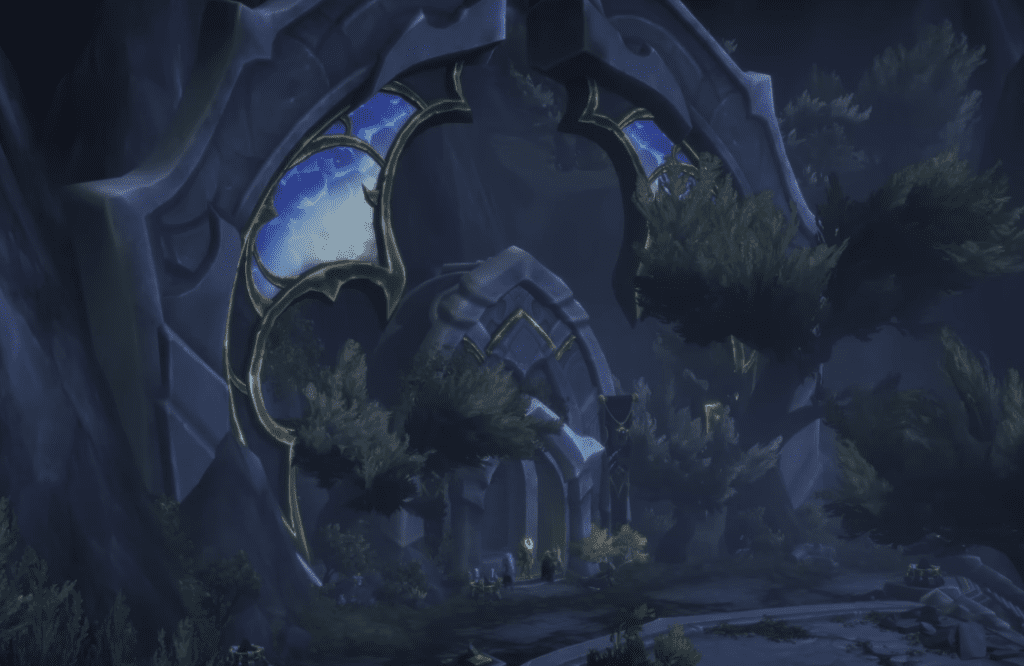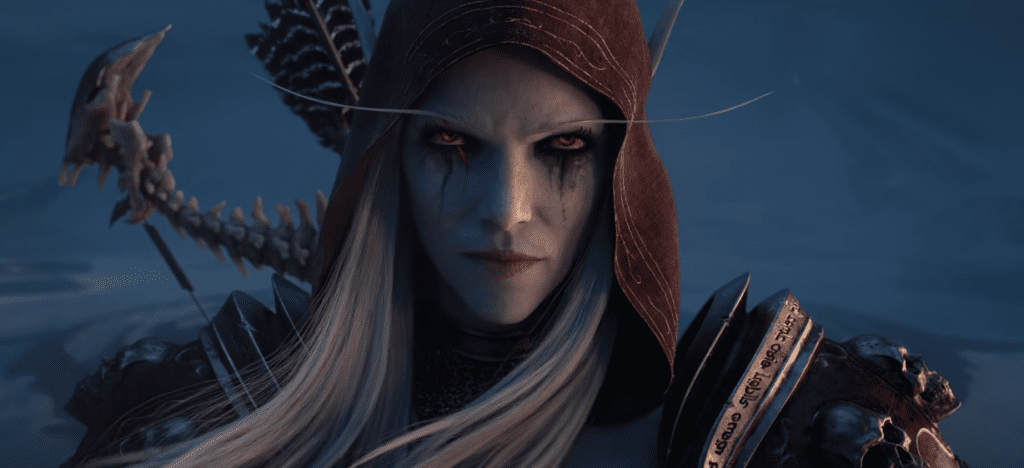RPGs (Role Playing Games) are some of the most popular and loved games out there, with many people getting their first taste of online gaming through them. In these titles, players take on the role of imaginary characters in a fictional world teeming with fantastical elements, such as magic, unique settings, and various races.
As the internet grew more popular, some people had the idea to create online iterations of RPGs, which became known as MMORPGs (Massively Multiplayer Online RPGs). They differ from traditional tabletop RPGs by allowing (and in many cases encouraging) players to interact with each other through a variety of means, such as chatting, partying up to take on a boss, trading on the market, and even being part of a huge guild.
Their success is undeniable, with many people being able to cite some MMORPGs off their heads, with names like World of Warcraft, RuneScape, Black Desert Online, and Lost Ark being the most popular ones.
Inspired by the overwhelming success of these games, many want to build an MMORPG of their own. And that’s exactly what we will cover in this article! By diving deep into the planning and development stages of these games, we hope to give you a thorough overview of how to make an MMORPG game.
Have a good read!
How to make an MMORPG game: planning the three core elements
Almost all things in life demand some planning, and games are not an exception to this rule. Below, we have written a variety of things to consider when planning and designing your MMORPG game.
Worldbuilding: creating a setting your players will love
One of the most critical aspects of RPGs, in general, is its setting – the place where all your stories will be told, including the ones of your players. As such, going the extra mile in creating a universe that feels believable, immersive, and alive goes a long way. It is also essential for it to be internally consistent, as plot holes in the game’s lore could be a turnoff for some niche-type players.
To help you out with worldbuilding, we have written another article covering that, but we’re going to jot some questions down to get you started:
- What are the races, civilizations, and factions/kingdoms in your world? How do they interact with each other? Do they trade between them, or do they try to isolate themselves from the outer world as much as possible? How did they come to be? In which conflicts were they involved? What were their outcomes? Are there any current disputes between them? Who are the most important figures in your world? Are there any big families?
- What about the deities in your world? Do they exist, or are they just a belief held among the common people? How many religions are there, and how do they differ from each other? Are there any sacred objects/locations fueling conflicts between them?
- How does magic work? Who can do magic? Is it innate (talent), or can the average person learn to wield the arcane arts as well? Which resource is used? Do players need special weapons to channel them? Which schools of magic are there?

Another thing to pay attention to is the players. What is their role in this vast, fantastic world? How can players interact with the world? Can they collectively alter the course of the game? How much can you customize your character? How much do choices matter in the game?
Non-playable characters (NPCs) also play a role in making the worldbuilding feel consistent, immersive, and realistic. Their dialogues, actions, and reactions to the world around them help players better understand the world they are playing in.
Last, but not least, it’s essential to note that MMORPG worlds are in constant expansion, with bigger updates being released on average once a year for some of the biggest titles. World of Warcraft, The Elder Scrolls Online, and Neverwinter are examples of games that regularly get updates, giving more content for players to explore, information to discover about the world, and secrets to unravel.

Systems: designing enjoyable mechanics for players to master
All games have a collection of systems and mechanics that allow players to progress through the game, and MMORPGs often have dozens of intricately intertwined mechanics. While some are responsible for vertical progression, most systems serve as a parallel means of obtaining more power and prestige in the world.
One of the crucial mechanics in MMORPGs is experience, which players can obtain by killing enemies, finishing quests, clearing dungeons and raids, completing small tasks here and there, and taking part in events. Three more that are critical to nail include gearing (and its progression), abilities, and economics.
To help you design great systems for your game, ponder the following questions:
- What are the daily tasks you want your players to complete?
- How can players obtain and enhance their equipment?
- Will there be “life skills” (like gathering, cooking, crafting, and many more)?
- Will players be able to modify their skills as they see fit? If so, how much freedom will they have?
- How will the in-universe economics work? How many currencies will there be, and how can players obtain them?

Classes: giving your players freedom of choice
Generally speaking, MMORPGs are characterized by their extensive use of archetypes. We are sure you are tired of seeing the infamous “warrior, mage, and rogue” trio everywhere – the warrior is strong, bulky, and wields melee weapons; the mage is a master of the arcane arts, wreaking havoc on their foes at distance; and the rogue is usually squishy, but is quick and stealthy, dominating enemies from the shadows.
Most games, however, only use those three archetypes as a base: imagine them being the three vertices of a triangle. With this framework, game designers can mix and match traits of all three classes at will, creating new ones to offer many possibilities for their players.
Furthermore, it’s essential to consider which classes will be required in a party to take on the most challenging content your MMORPG has to offer. Most games opt for a single tank, a single healer/support, and multiple damage dealers, and this tried-and-true recipe works really well, but is it ideal for your game?

How to make an MMORPG game: development
After planning all the nitty-gritty of your game, you will have to put in the time and work to bring it to life.
Create a Game Design Document (GDD)
Gather your top-level executives, an experienced game designer or two, and a concept artist, and get to work, as the very first thing you should work on is the GDD – the document containing all the details for your game, ranging from an executive summary to a thorough description of the MMORPG’s core game mechanics.
But what is the role of a GDD? Simply put, it serves as the assembly manual for your MMORPG, letting designers, artists, and developers be on the same page at the same time, ensuring the game is as cohesive as possible.
If you are a solo indie developer, the GDD plays the additional role of being your project’s entire documentation. We understand that developing great games can take months (if not years for the most complex projects). As such, it’s paramount to keep your ideas safe somewhere just in case you forget about a particular detail of your MMORPG.
Keep in mind that the GDD is a living document – as designers refine their creation and QA results come pouring in, the GDD might be updated to create a better experience for your players. Don’t forget that everyone should be working with the GDD’s most recent version, or else you risk wasting some precious time!
Choose your game engine
When talking about MMORPGs, we often imagine fully-fledged gaming experiences in 3D. With this in mind, choosing a game engine that will let you create three-dimensional experiences is a must. Despite dozens of viable game engines existing on the market, it is hard to challenge Unity’s and Unreal Engine’s reign among game developers.
In short, Unity is the recommended engine of choice for beginner and indie developers due to its clear and intuitive design, its massive community, and its programming language of choice, C#. Unity has grown so popular in recent years that it created a huge demand for tutorials and courses over the internet, some of which can be found for free on YouTube or behind a modest one-time payment on Udemy (and other online learning platforms).
Unreal Engine, on the other hand, is a much harder beast to tame, but its potential is unparalleled – no wonder it’s often the choice of AAA game developers. Two of its key strengths include its graphics, which come bundled with powerful post-processing effects, and the recent introduction of Blueprint, a visual scripting system that aims to make Unreal Engine more accessible for those with little experience with C++, one of the most ruthless popular programming languages.
That said, it’s possible to create fantastic MMORPGs with either game engine – pick the one you feel the most comfortable with and develop it away!

Create (or buy) your game assets
In the game industry, “assets” refer to all the visual and auditive elements the player will interact with when gaming. They include but are not limited to graphics, 3D models (and their animations), GUI, sound effects, and even AI scripts. Contrary to what many people say, graphics do matter! In fact, a 2014 research by the Consumer Electronics Association found that, for 75% of gamers, graphics played a part in their decision to purchase a new game.
Creating those assets, however, is a beast in its own right: it’s a lengthy and sometimes repetitive task that demands lots of work and discipline. This is why game art is the second most expensive part of developing a game, being overshadowed only by marketing and promotion costs.
To design and create all the assets required for an MMORPG, developers will often choose one of the following paths: hire qualified in-house game artists, find outsourcing companies specializing in game art, or work for hours on their own.

If you do end up choosing the DIY approach, you will need to learn how to use the following software:
- 3D modeling: Blender (a free all-in-one solution for 3D modeling) or Autodesk Maya;
- 3D sculpting: Blender or ZBrush;
- 3D rigging and animation: Blender or Autodesk Maya.
MMORPG development is made easy with Main Leaf
Now that you understand how to make an MMORPG and all the effort that goes into it, actually committing to it might not be a pleasant idea. If you have an idea for a delightful MMORPG sitting in the corners of your mind, but you don’t want to deal with all the nitty-gritty that goes into making one, we have the perfect solution right for you!
We are Main Leaf, a game development studio that’s been in activity since 2010. Proficient in all things game design, art, and development, we work with our clients to bring their game ideas to life, and we would be pleased to do the same for you!
One of the best approaches to creating anything is to work alongside highly qualified and experienced professionals, who can ensure their work will leave you nothing short of impressed. To get started with Main Leaf, all you need to do is request a game quote below!

